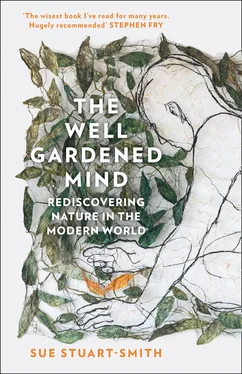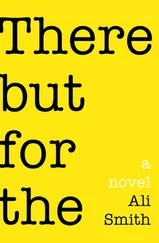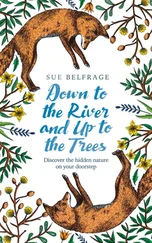Wordsworth frequently worked on his poems in that garden. He described the essence of poetry as ‘emotion recollected in tranquillity’ and it is true for all of us that we need to be in the right kind of setting to enter the calm state of mind needed for processing powerful or turbulent feelings. The Dove Cottage garden, with its sense of safe enclosure and lovely views beyond, gave him just that. He wrote many of his greatest poems whilst living there and developed what would be a life-long habit of pacing out rhythms and chanting verses aloud whilst striding along garden paths. So the garden was both a physical setting for the house as well as a setting for the mind; one that was all the more significant for having been shaped by his and Dorothy’s own hands.
Wordsworth’s love of horticulture is a less well-known aspect of his life but he remained a devoted gardener well into old age. He created a number of different gardens, including a sheltered winter garden for his patron Lady Beaumont. Conceived of as a therapeutic refuge, it was designed to alleviate her attacks of melancholy. the purpose of a garden such as this was, he wrote, ‘to assist Nature in moving affections’. In providing a concentrated dose of the healing effects of nature, gardens influence us primarily through our feelings but however much they may be set apart as a refuge, we are nevertheless, as Wordsworth described, ‘in the midst of the realities of things’. These realities encompass all the beauties of nature as well as the cycle of life and the passing of the seasons. In other words, however much they can offer us respite, gardens also put us in touch with fundamental aspects of life.

Like a suspension in time, the protected space of a garden allows our inner world and the outer world to coexist free from the pressures of everyday life. Gardens in this sense, offer us an in-between space which can be a meeting place between our innermost, dream-infused selves and the real physical world. This kind of blurring of boundaries is what the psychoanalyst Donald Winnicott called a ‘transitional’ area of experience. Winnicott’s conceptualisation of transitional processes was to some extent influenced by Wordsworth’s understanding of how we inhabit the world through a combination of perception and imagination.
Winnicott was also a paediatrician and his model of the mind is about the child in relation to the family and the baby in relation to the mother. He emphasised that a baby can only exist by virtue of a relationship with a care-giver. When we look at a mother and baby from the outside it is easy to distinguish them as two separate beings, but the subjective experience of each is not so clear-cut. The relationship involves an important area of overlap or in-between through which the mother feels the baby’s feelings as the baby expresses them and the baby in turn does not yet know where it begins and its mother ends.
Much as there can be no baby without a care-giver, there can be no garden without a gardener. A garden is always the expression of someone’s mind and the outcome of someone’s care. In the process of gardening too, it is not possible to neatly categorise what is ‘me’ and what is ‘not-me’. When we step back from our work how can we tease apart what nature has provided and what we have contributed? Even in the midst of the action itself, it is not necessarily clear. Sometimes when I am fully absorbed in a garden task, a feeling arises within me that I am part of this and it is part of me; nature is running in me and through me.
A garden embodies transitional space by being in-between the home and the landscape that lies beyond. Within it, wild nature and cultivated nature overlap and the gardener’s scrabbling about in the earth is not at odds with dreams of paradise or civilised ideals of refinement and beauty. The garden is a place where these polarities come together, maybe the one place where they can so freely come together.
Winnicott believed that play was psychologically replenishing but he emphasised that in order to enter an imaginary world, we need to feel safe and free from scrutiny. He employed one of his trademark paradoxes to capture this experience when he wrote of how important it is for a child to develop the ability to be ‘alone in the presence of the mother’. In my gardening, I often recapture a feeling of being absorbed in play – it is as if in the safe curtilage of the garden, I am in the kind of company that allows me to be alone and enter my own world. Both daydreaming and playing are increasingly recognised to contribute to psychological health and these benefits do not stop with the end of childhood.

The emotional and physical investment that working on a place entails means that over time it becomes woven into our sense of identity. As such it can be a protective part of our identity too, one that can help buffer us when the going gets tough. But as the traditional pattern of a rooted relationship to place has been lost, so we have lost sight of the potentially stabilising effects on us of forming an attachment to place.
the field of attachment theory was pioneered by the psychiatrist and psychoanalyst John Bowlby in the 1960s, and there is now an extensive research base associated with it. Bowlby regarded attachment as ‘the bedrock’ of human psychology. He was also a keen naturalist and this informed the development of his ideas. He described how birds return to the same place to build their nests year after year, often close to where they were born and how animals do not roam about at random, as is often thought, but occupy a ‘home’ territory around their lair or burrow. In the same way, he wrote, ‘each man’s environment is unique to himself’.
attachment to place and attachment to people share an evolutionary pathway and a quality of uniqueness is central to both. The feeding of an infant is not enough on its own to trigger bonding because we are biologically encoded to attach through the specificity of smells, textures and sounds, as well as pleasurable feelings. Places, too, evoke feelings and natural settings are particularly rich in sensory pleasures. These days we are increasingly surrounded by functional places lacking in character and individuality, like supermarkets and shopping malls. Whilst they provide us with food and other useful things, we don’t develop affectionate bonds for them; in fact they are often deeply unrestorative. As a result, the notion of place in contemporary life has increasingly been reduced to a backdrop and the interaction, if there is any, tends to be of a transient nature, rather than a living relationship that might be sustaining.
At the heart of Bowlby’s thinking is the idea that the mother is the very first place of all. Children seek out her protective arms whenever they are frightened, tired or upset. This ‘safe haven’ becomes what Bowlby called a ‘secure base’ through repeated small experiences of separation and loss that are followed by reunion and recovery. When a feeling of security has been established, a child becomes emboldened to explore its surroundings, but still keeps half an eye on its mother as a safe place to return to.
It is a sad fact of modern childhood that playing outdoors has become something of a rarity but traditionally parks and gardens provided the setting for an important kind of imaginative and exploratory play. Creating dens in the bushes as ‘adult-free’ zones is a way of rehearsing future independence and they have an emotional role too. research shows that when children are upset, they instinctively use their ‘special’ places as a safe haven in which they feel protected while their unsettled feelings subside.
Читать дальше












